“Stand fast in the faith, and love one another, all of you, and be not offended at my sufferings.”
(From an ancient account of “The Passion of the Holy Martyrs, Perpetua and Felicity”)
A priest I know told me of an experience he had in Carthage years ago which put him in touch with a piece of the Church’s history. It was in the ancient city of Carthage, North Africa, whose modern city retains the same name. It lies about 8 or 10 miles east of Tunis, the capital of Tunisia.
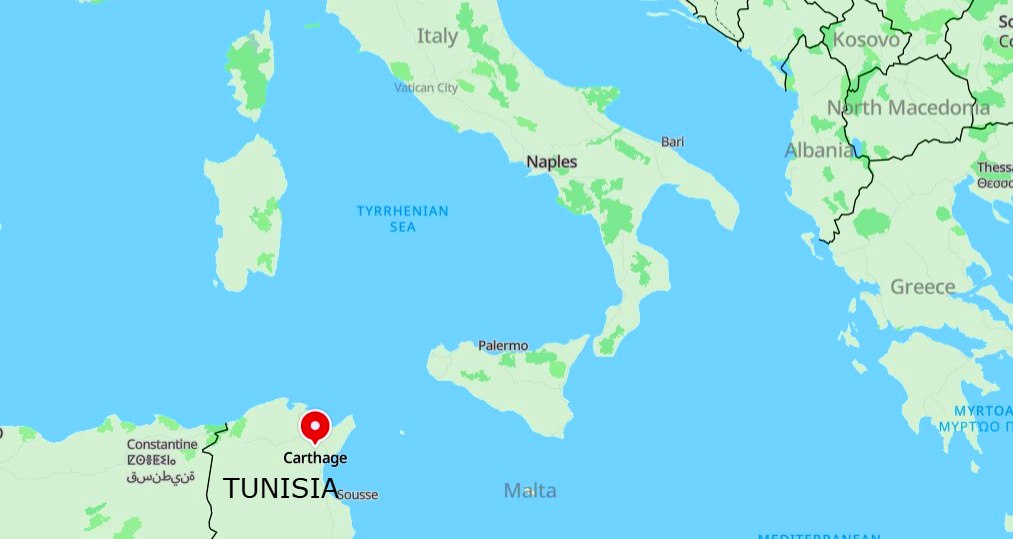
Carthago Delenda Est
On a fascinating historical note, in 1985, the mayor of Rome and the mayor of Carthage signed a “symbolic peace treaty” bringing to a conclusion the war between the two ancient superpowers (technically three long wars, called the Punic Wars, 264-146 BC).
Up to that point, there had never been a peace treaty ending the war because of the vitriolic hatred of the two peoples for each other. There was also that little matter of the Romans literally wiping Carthage off the face of the map, stone by stone, and sowing salt in their fields so that nothing could grow there for generations.
The warmongering phrase that was used to whip up Roman war sentiment at the time was Carthago delenda est (“Carthage must be utterly annihilated.”) I’m told Nancy Pelosi liked the idea so much that she changed “Carthage” to “the USA” and adopted it as her personal motto, but that might just be misinformation. Anyway…
So, technically, the Roman-Cathaginian war had been going on for over 2100 years and officially ended only in 1985!
The Site of Martyrdom
My priest friend had been a member of a missionary religious order whose purpose was to evangelize the continent of Africa. Their headquarters and seminary were based in Carthage.
During his time there, the priest remembers visiting the very arena in which Perpetua and Felicity were martyred in the year 203 AD. They perished along with three men who were catechumens, one of whom was her brother. Their catechist, Saturus, voluntarily went to prison with them so that they would not feel abandoned by the Church.
Can you imagine such an act of heroism? Can you imagine visiting the site of their martyrdom that is still preserved? Here is an old picture of the archeological digs there in the 1920s.
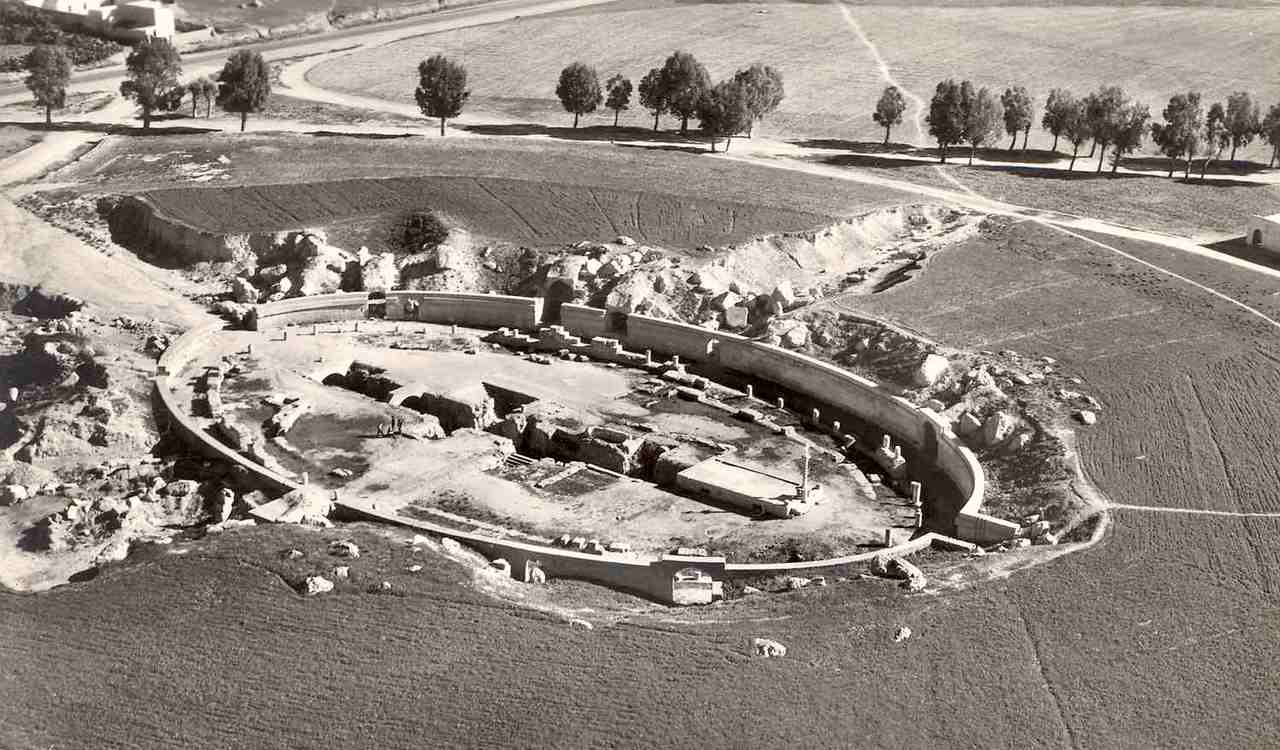
Aerial Photo (1950) of the Carthage Ampitheater where Perpetua and Felicity were martyred
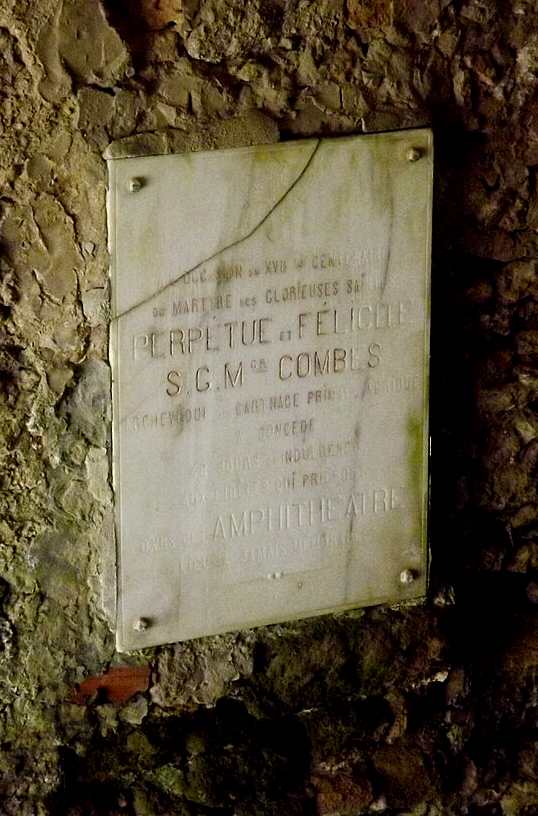
Dungeon Plaque to martyrs in French
My priest friend noted that the young women were kept in a filthy dungeon during the week of their imprisonment. When they were finally sent to the arena, they came up from the dungeon by a sort of makeshift elevator whose opening can be seen in the center of the picture (covered by the arch-like structure.)
Their martyrdom was so striking in all aspects that it was carefully written down for posterity. Some of these writings are firsthand accounts from Perpetua herself, who was an educated noblewoman. We can read it to this day as fresh (and graphic) as the day the holy martyrs went to their graves. [LINK]
Not Yet Fully Christians
Their whole incident was very complex, so I can’t recount it all here, but I’d like to focus on some amazing fruits of their suffering. These martyrs bring us 1800 years of inspiration for our own Lenten penitential season and sacrifices.
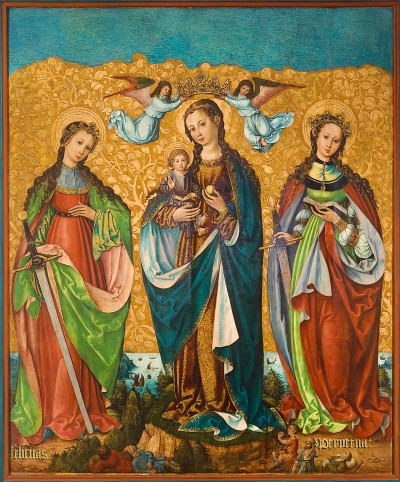 Vibiana Perpetua was a 22-year-old mother with an infant son. She was preparing to become a Christian, though she had not yet been baptized when she was arrested. She and the other four catechumens were baptized in prison.
Vibiana Perpetua was a 22-year-old mother with an infant son. She was preparing to become a Christian, though she had not yet been baptized when she was arrested. She and the other four catechumens were baptized in prison.
If that wasn’t amazing enough, Felicity her servant, was 8 months pregnant at the time of arrest. There was a Roman law that prohibited the killing of pregnant women, so they waited until she had given birth before they threw her to the beasts. Wasn’t that nice of them?
Let’s just stop here for a moment to dwell on a situation like this. Christianity itself was only 170 years old at that point. Perpetua and her companions were not even full members of the Church. Yet, when they were confronted with the ultimatum, “Renounce Christ and offer incense to the Roman Emperor,” they refused.
How easy it would have been for them to backtrack and save themselves, but they chose death instead of idolatry. I believe that it was owing to their amazing catechist, Saturus, and to the forthright leadership of Perpetua that all the catechumens remained faithful to the end. But nothing about their ordeal was easy.
Purgatory: Psychological Suffering
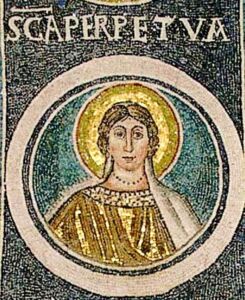 Perpetua’s family was unwittingly the cause of intense psychological suffering. Her father, for example, was a pagan and a perfect reminder of why Christians must be willing to renounce father and mother for the sake of a higher loyalty.
Perpetua’s family was unwittingly the cause of intense psychological suffering. Her father, for example, was a pagan and a perfect reminder of why Christians must be willing to renounce father and mother for the sake of a higher loyalty.
Perpetua knew that her death would not sit well with him—but then again, could any father, pagan or otherwise, be neutral in the face of the violent death of his child? But she wrote tenderly: “And I grieved, for my father’s sake, because he alone of all my kindred would not have joy at my martyrdom.”
Understandably, her father tried to stop her from going to the beasts, but all of his attempts only served as a sort of emotional torture for the saint. First it was the practical approach: “Just throw some incense on the fire and save yourself. Everyone else is doing it.” She was unmoved by his logic.
Then it was personal and a bit self-pitying, along the lines of “How could you do this to poor me?!” He then asserted that she would bring dishonor upon her whole family by dying this way. And he pleaded with her amid copious tears.
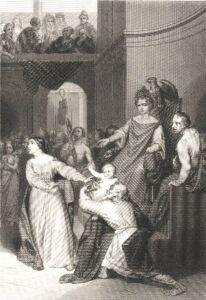 Finally, he made a gut-wrenching appeal to her maternal instincts: “Think of your infant child!” When that didn’t work, he brought her infant baby into the courtroom where the group was being condemned, held the boy up before the eyes of all, and begged her not to abandon her baby. Can you imagine that scene?
Finally, he made a gut-wrenching appeal to her maternal instincts: “Think of your infant child!” When that didn’t work, he brought her infant baby into the courtroom where the group was being condemned, held the boy up before the eyes of all, and begged her not to abandon her baby. Can you imagine that scene?
Let’s not underestimate the psychological power of appeals like that, especially regarding children. Who among us could withstand a loved one pleading with us so forcefully? It would be easier to just throw some incense on the fire and be done with it. Who would blame you?
But Perpetua would not forsake her Lord Jesus. On the contrary, showing her true nobility, she encouraged her companions to “Stand fast in the faith, and love one another, all of you, and be not offended at my sufferings.”
The Men
The Greek word martus means “witness” (a legal term), but it was quickly adopted by the early Church to apply to the Christians who were persecuted and killed for their faith. Martyrs are witnesses to Christ.
These particular martyrs were amazing warriors. When the men were led into the arena past the procurator’s booth, they looked up and warned him that he and his cohorts would soon face the judgment of God for what they were doing! I like that kind of steely resolve in men being led to death. They were then set upon by a leopard and a bear but not killed.
Their catechist, Saturus, must have been an extraordinary fellow. Even in such extreme circumstances, he was still evangelizing.
He admitted that he had a fear of bears (who doesn’t!), but when he was led into the arena, the bear simply ignored him! Then he was attacked by a wild boar instead but remained unscathed. Rather, the wild boar turned on its keeper, and killed the keeper!
![]()
Soon again, Saturus was tied to a stake so that the bear could maul him, but the bear didn’t bother to come out of his den! You can’t make up a story like this.
At that point, Saturus spoke to the jailer who had expressed admiration for the martyrs: “Here I am, as I have foretold, for up to this moment I have felt no beast. And now believe with your whole heart. Lo, I am going forth to that beast, and I shall be destroyed with one bite of the leopard.” Saturus was then set upon by the leopard and died exactly as he prophesied.
As his dying act, he took the jailer’s ring and dipped it in his own blood. Giving it back, he said, “Farewell, and be mindful of my faith; and let not these things disturb, but confirm you.” Pretty amazing.
The Women
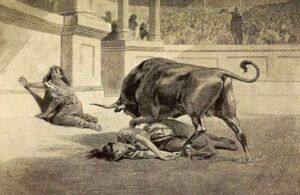 It is said that Perpetua and Felicity entered the amphitheater “as if to an assembly, joyous and of brilliant countenances.” Astonishingly, she had given birth the day before and gave the baby up to a Christian couple who promised to raise the child in the faith. Felicity rejoiced “that she had safely brought forth, so that she might fight with the wild beasts.”
It is said that Perpetua and Felicity entered the amphitheater “as if to an assembly, joyous and of brilliant countenances.” Astonishingly, she had given birth the day before and gave the baby up to a Christian couple who promised to raise the child in the faith. Felicity rejoiced “that she had safely brought forth, so that she might fight with the wild beasts.”
Both women were then set upon and grievously wounded by a wild cow in the arena, to the delight of the raucous crowd. Both were injured but neither died.
 In fact, except for Saturus, all the martyrs were wounded by beasts in the blood sport of the arena but had escaped death by their jaws. Yet, their sentence was Death for Being a Christian, so they were finally dragged off for the coup de grâce.
In fact, except for Saturus, all the martyrs were wounded by beasts in the blood sport of the arena but had escaped death by their jaws. Yet, their sentence was Death for Being a Christian, so they were finally dragged off for the coup de grâce.
Perpetua’s death was remarkable. The soldier who was assigned to administer the death blow got the shakes and missed her vital organs with his first thrust of the sword. It is said that Perpetua then “placed the wavering hand of the youthful gladiator to her throat” to stabilize him so that he would be certain to make the next blow count.
After that, the ancient account reads that “Such a woman—one before whom the unclean spirit trembled—could not perhaps ha
The Prime Question
Should someone so young, indeed, a mother with a child and her whole life ahead of her, throw everything away for the sake of Christ? It’s a valid question for all Christians.
If you’re someone who believes that life on this earth is preparation for another Reality that surpasses anything here below, then the answer is yes, if God wills it. Martyrdom then becomes a view through a sacred window into eternal life.
The city of Carthage had a population of about 100,000 when Perpetua and Felicity were martyred, so there must have been thousands of other twenty-somethings who lived there at the time.
But we don’t know a single one of their names.
———-
Picture Credits:
Feature: Last Prayer in the Arena (Jean-Léon Gérôme); also via Wikimedia: Stained Glass (Nheyob); Amphitheater modern day (Neil Rickards); Plaque (Youssefbensaad); Mary with Perpetua and Felicity (National Museum in Warsaw); Father-Baby drawing (Rijksmuseum); Mosaic (Onbekende Venetiaanse kunstenaar); Bull drawing (public domain); Icon of all martyrs (Anonymous, public domain).
[Note: This article is a reproduction of the Sacred Windows Email Newsletter of 3/9/25. Please visit our Newsletter Archives.]
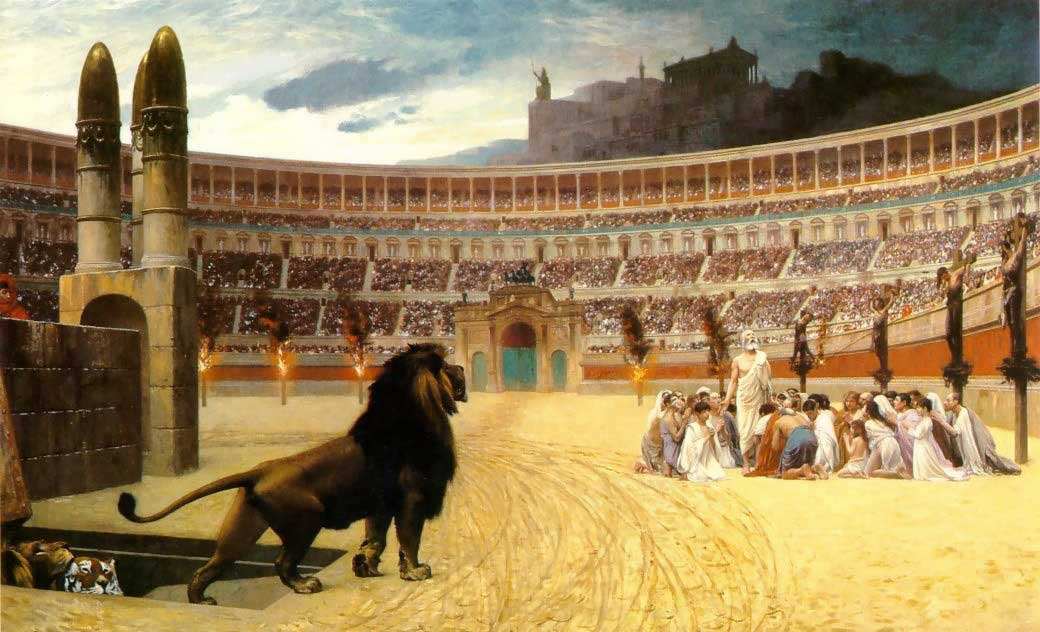
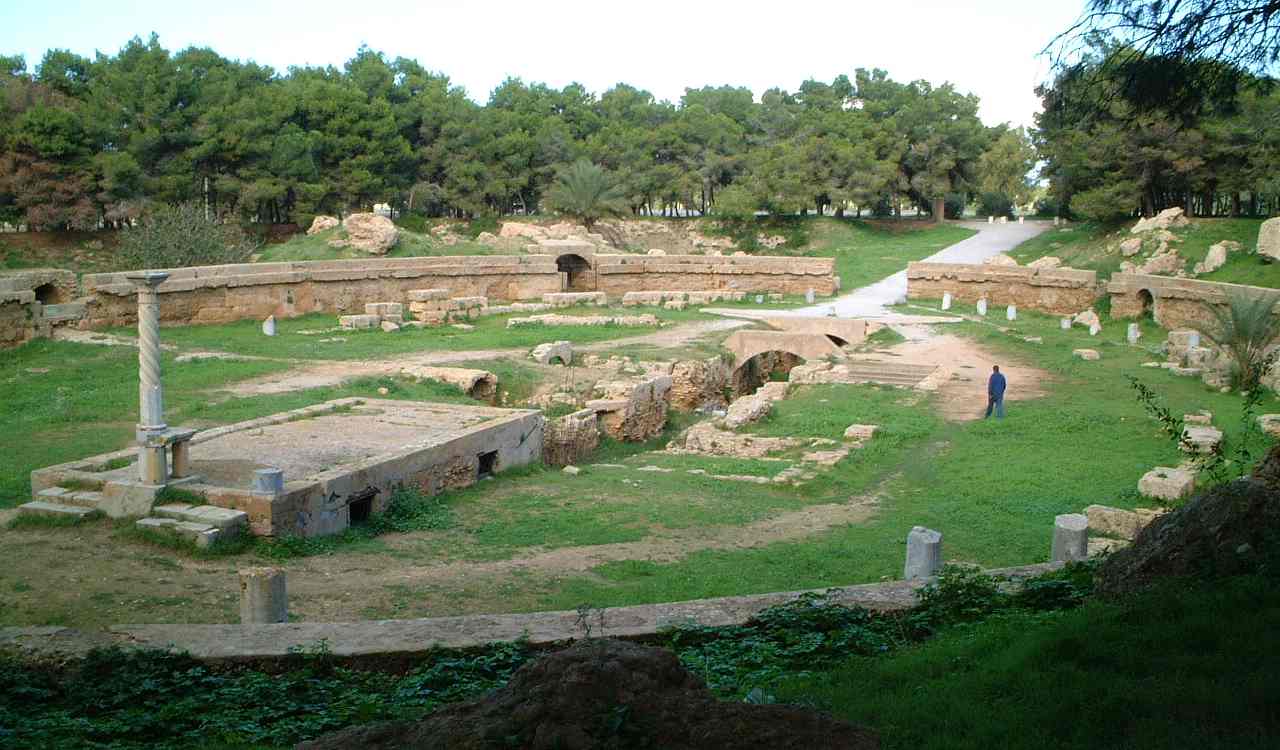
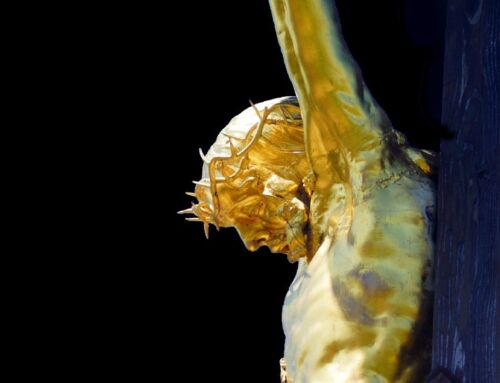
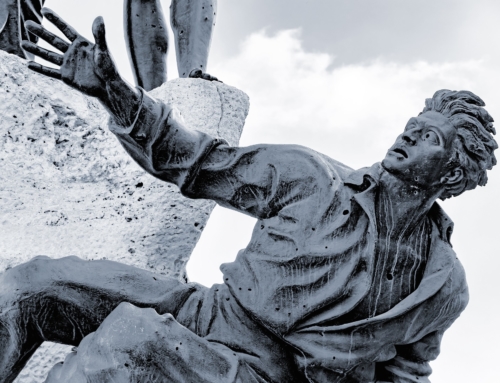

Leave A Comment